Home / Knepp Habitat Bank
the knepp habitat bank
The Knepp habitat bank spans four carefully selected zones, each chosen to enhance ecological connectivity across our wider rewilded landscape. These areas currently hold low biodiversity value — but through restoration, we’re transforming them into dynamic, nature-rich ecosystems.
Together, these habitats will deliver significant biodiversity uplift, supporting long-term nature recovery at Knepp.
Over the past 20 years, we’ve let natural processes shape the land, welcoming back rare species like nightingales, purple emperors, and turtle doves. Now, we’re building on that success through the creation of our dedicated Habitat Bank, offering off-site BNG units to support responsible development.
Backed by science, managed for the long term, and rooted in ecological integrity — Knepp’s BNG offering connects developers with genuine, high-value nature recovery.
What does our Habitat Bank involve?
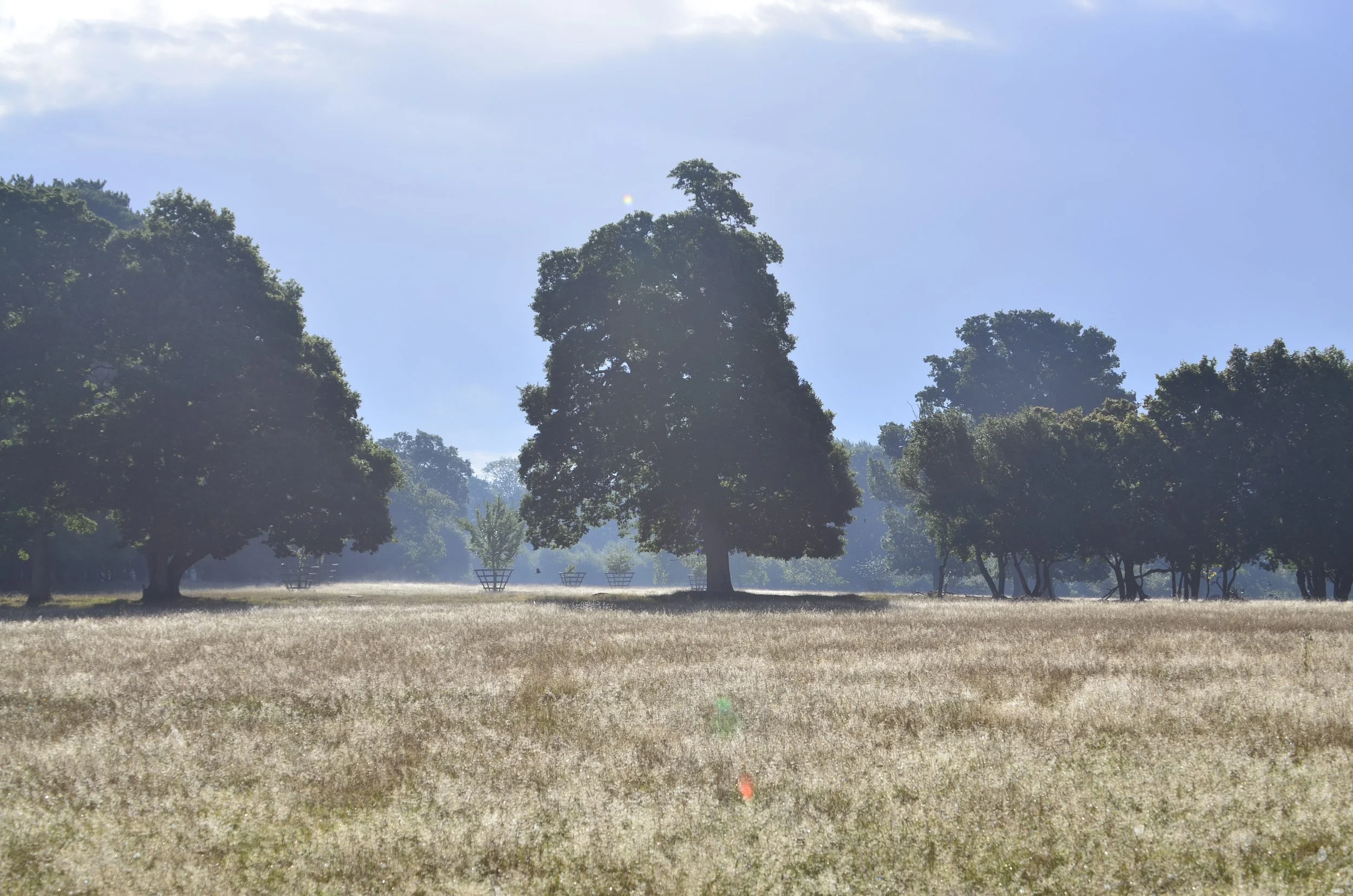
Restoring Species Rich Grassland
From polo pitch to pollinator paradise – we are transforming former polo fields and paddocks into vibrant species-rich pasture by:
- Ending intensive management
- Working with our neighbour’s beautifully biodiversity hay meadows to complete species rich green hay transfers
- Introducing low-density grazing to improve sward structure
- Creating seasonal scrapes to support amphibians, invertebrates, and waders
- Using excavation spoil to sculpt varied terrain and microhabitats.
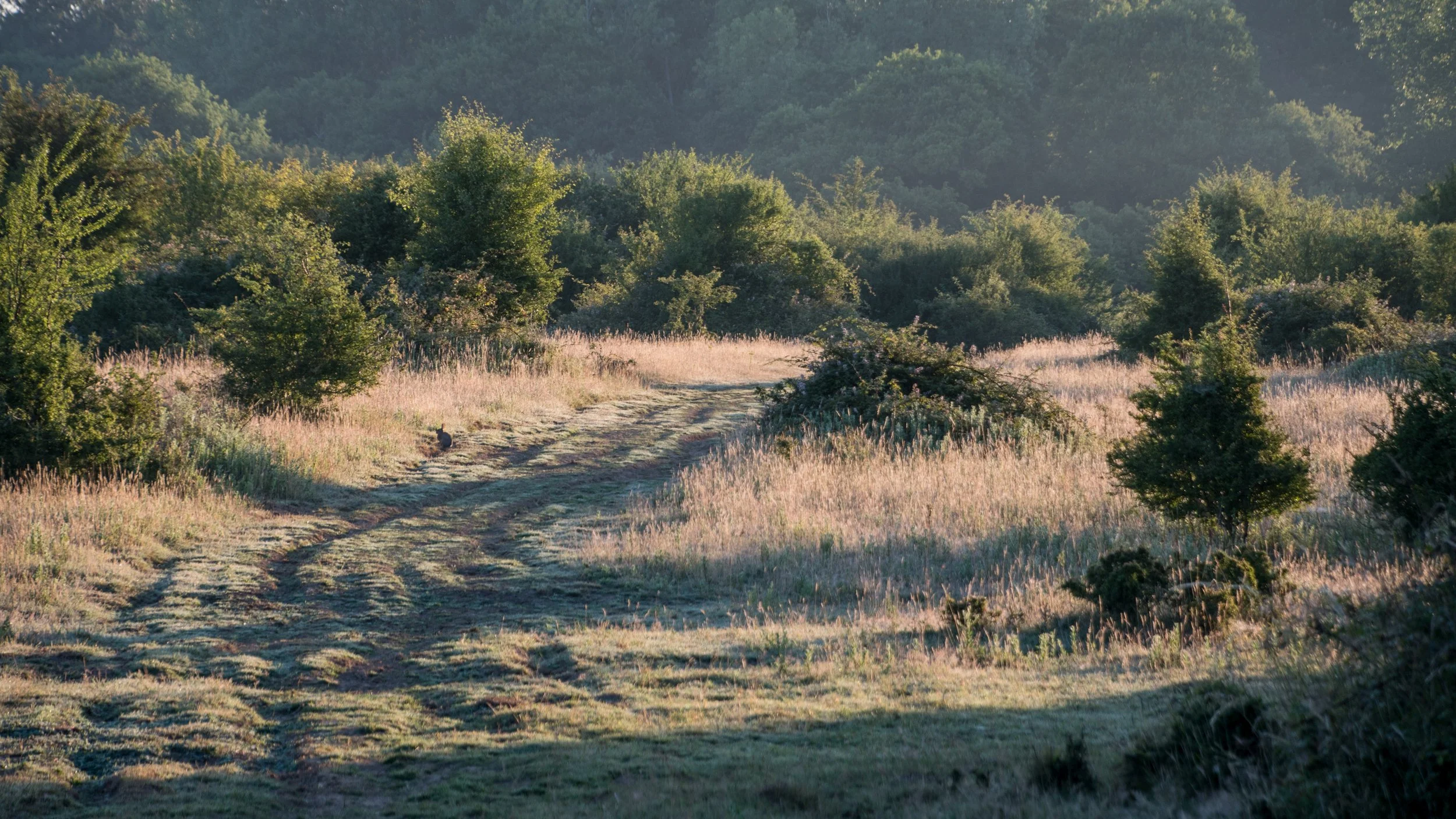
Regenerating Native Mixed Scrub
Our ecological engineers (pigs, cows and ponies) will support the establishment of naturally regenerating scrub. Scrub will increase habitat complexity, support wildlife, and connect woodland and grassland across the site. Our approach prioritises natural colonisation:
- Our Tamworth pigs will rootle across the land, breaking open the sward and enabling scrub to establish
- Our Longhorn cattle and Exmoor ponies will maintain openness and complexity through their grazing
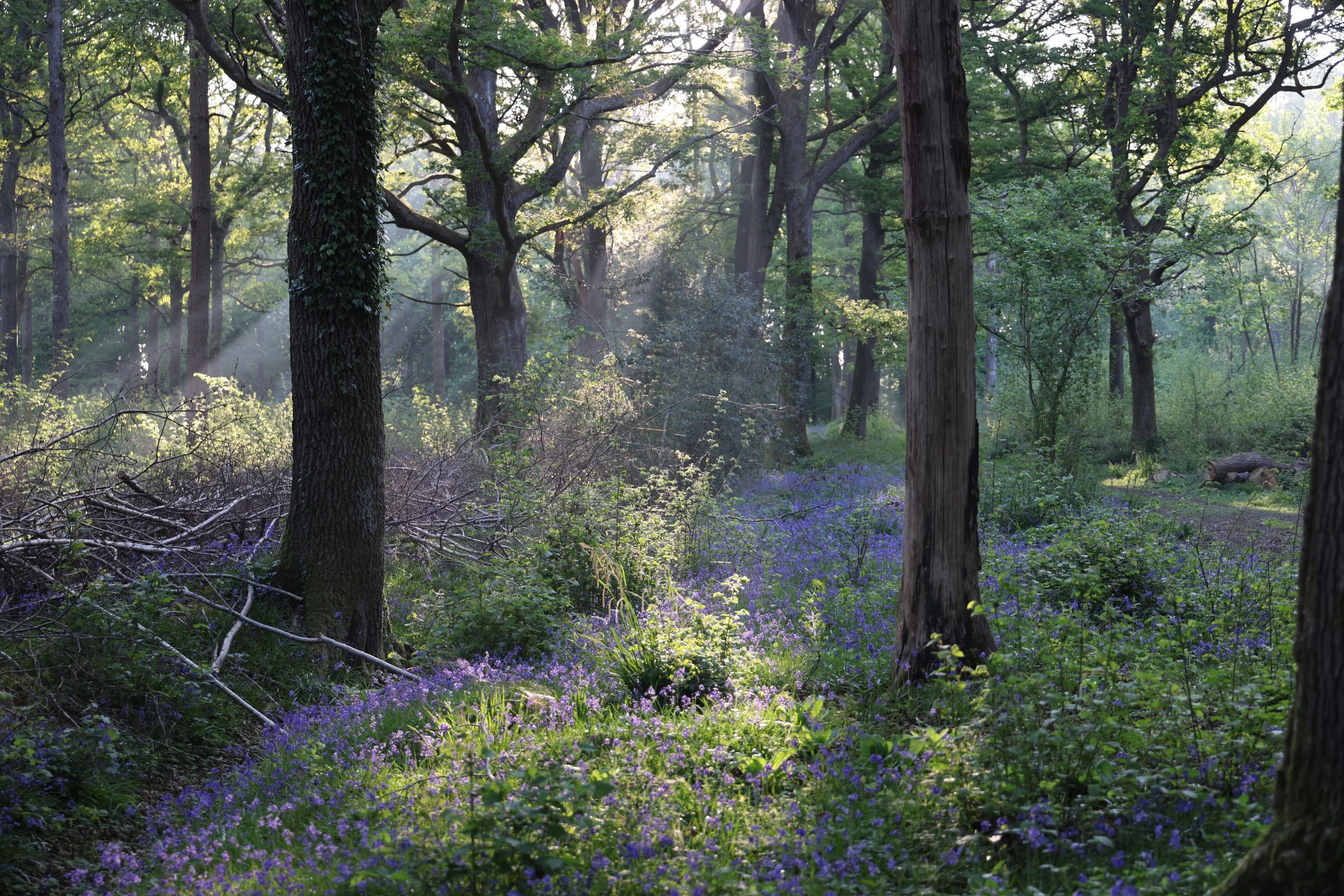
Enhancing Deciduous Woodland
We are enhancing neglected woodland which includes lowland mixed deciduous woodland, and sycamore-dominated former conifer plantations. We will restore these into structurally rich and ecologically diverse native woodland habitats by:
- Gradually removing non-native conifers and invasive species (e.g., rhododendron, snowberry)
- Planting native broadleaved species
- Promoting woodland ground flora through selective thinning
- Creating and retaining deadwood to enrich soils and support fungi, insects, and birds

Establishing Wood Pasture
We’re restoring areas of historic parkland and former paddocks into dynamic wood pasture — a rare, biodiverse habitat that blends scattered trees, open grassland, and natural regeneration. We will do this by:
- Protecting existing clumps and encouraging scrub regeneration
- Planting native trees to reconnect the historic Knepp Park landscape
- Allowing natural deadwood to remain standing or fall, enhancing saproxylic biodiversity
- Relocating deadwood from across the estate to boost habitat value
Our Vision
Our Habitat Bank will enhance ecological connectivity cross our rewilded landscape at Knepp. We’re transforming former polo fields, paddocks and plantations into functioning ecosystems that support high levels of biodiversity. Rooted in Knepp’s wider approach to nature restoration, we focus on enabling the right conditions for natural processes to re-establish, creating diverse habitats and resilient landscapes.
Thanks to Digg and Co for helping us to illustrate our vision for Knepp’s Habitat Bank, as shown below.
2025
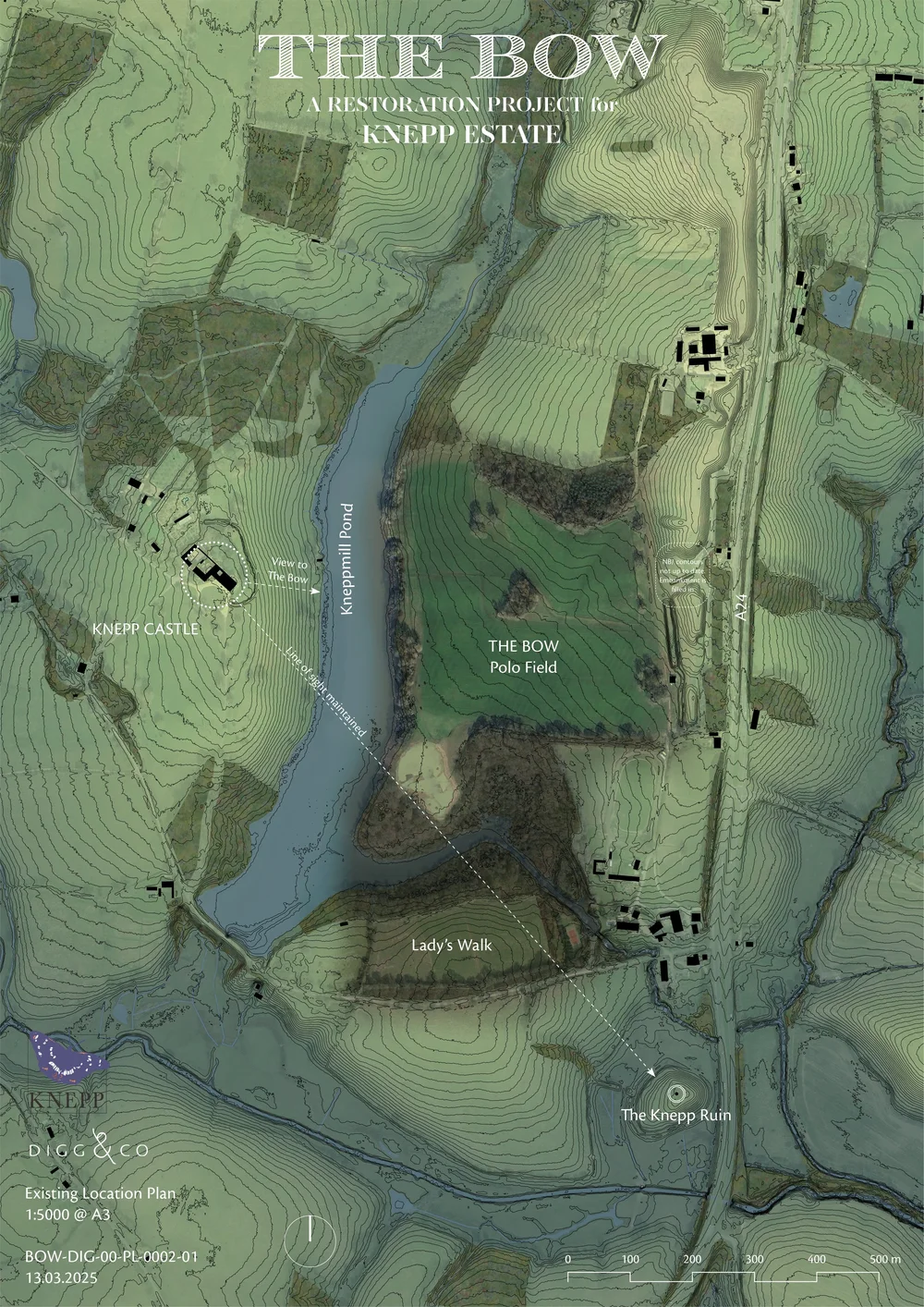
2026
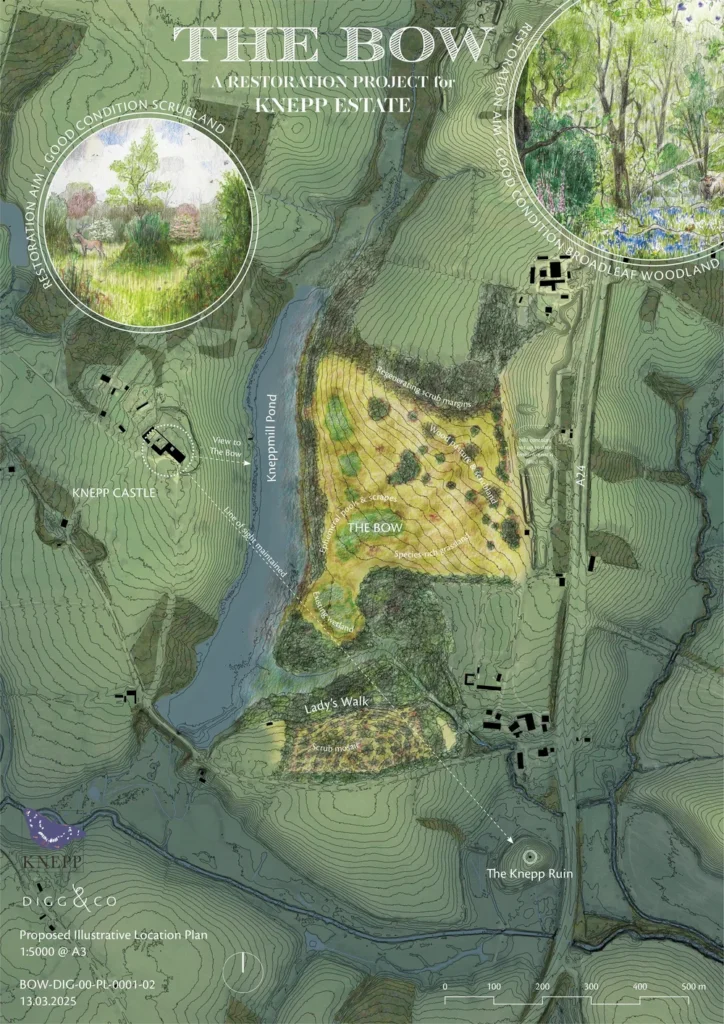
Winter 2055

Summer 2055
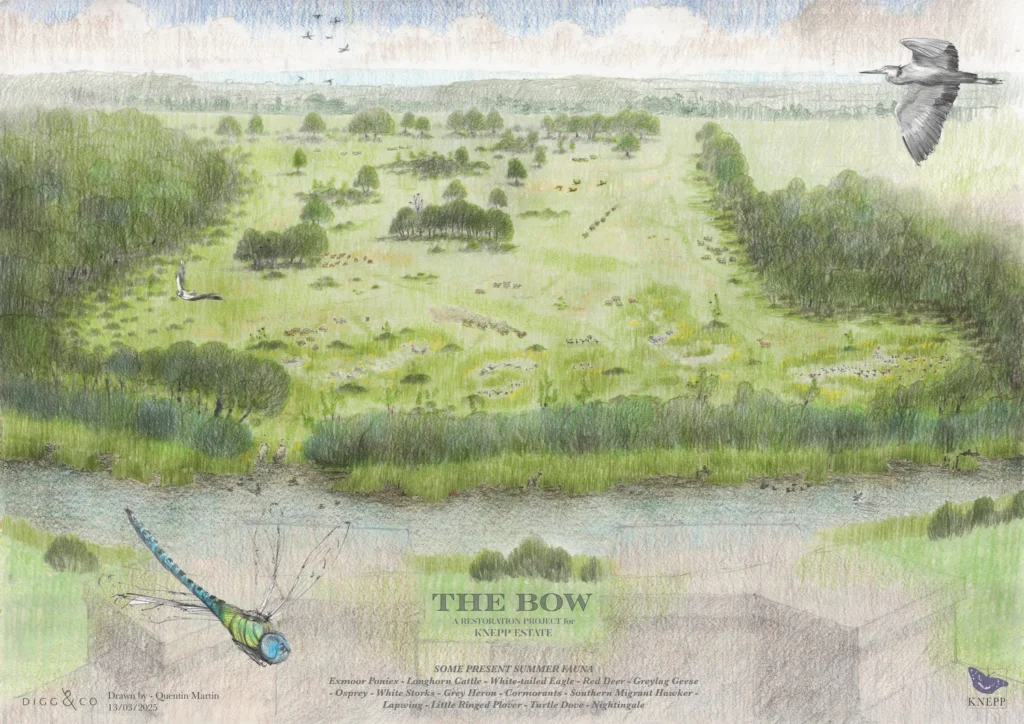
Strategic Impact
These interventions are designed not only to meet BNG requirements, but to:
Link rewilded zones across Knepp
Support rare and returning species
Create habitats that are ecologically functional, low-intervention, and climate-resilient